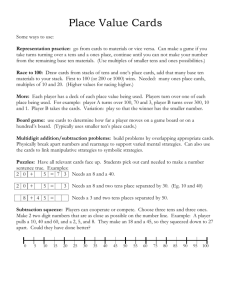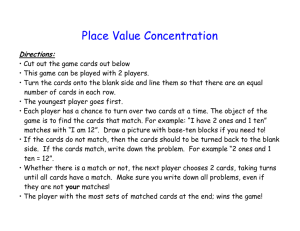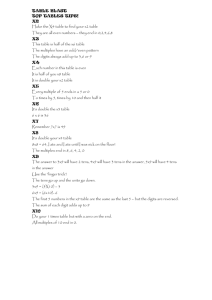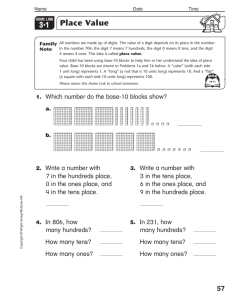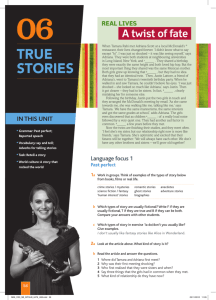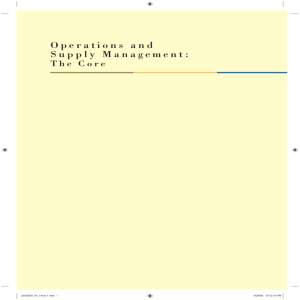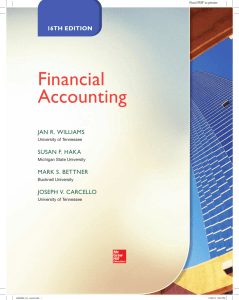Unit 7: Family Letter - Everyday Mathematics
advertisement
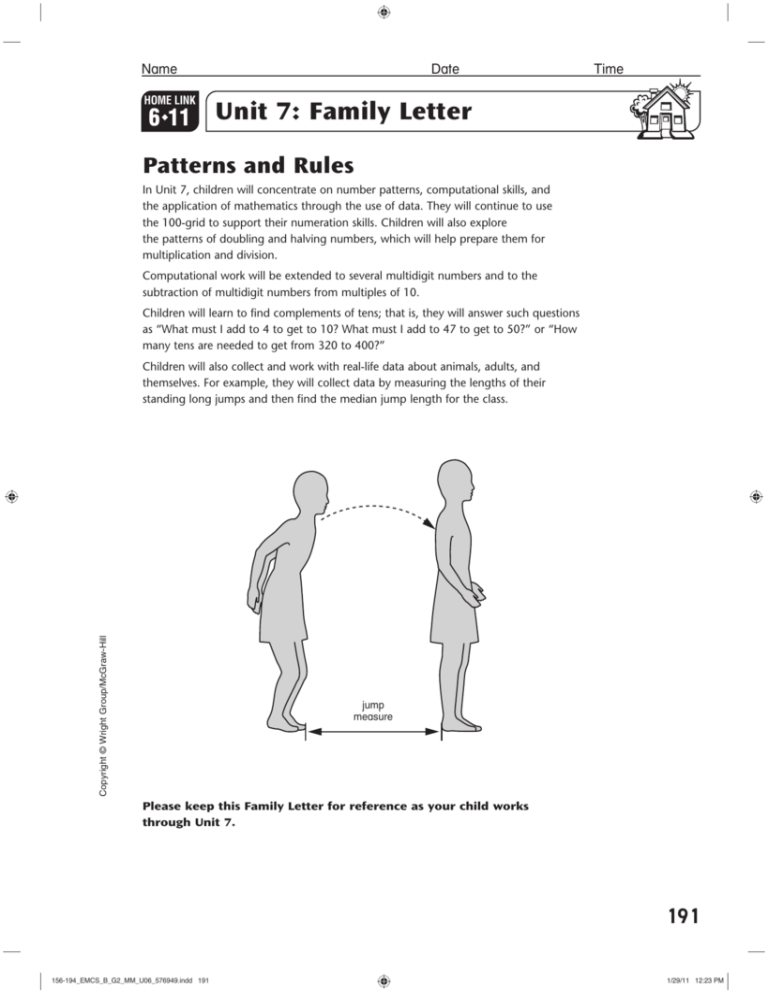
Name HOME LINK 6 11 Date Time Unit 7: Family Letter Patterns and Rules In Unit 7, children will concentrate on number patterns, computational skills, and the application of mathematics through the use of data. They will continue to use the 100-grid to support their numeration skills. Children will also explore the patterns of doubling and halving numbers, which will help prepare them for multiplication and division. Computational work will be extended to several multidigit numbers and to the subtraction of multidigit numbers from multiples of 10. Children will learn to find complements of tens; that is, they will answer such questions as “What must I add to 4 to get to 10? What must I add to 47 to get to 50?” or “How many tens are needed to get from 320 to 400?” Copyright © Wright Group/McGraw-Hill Children will also collect and work with real-life data about animals, adults, and themselves. For example, they will collect data by measuring the lengths of their standing long jumps and then find the median jump length for the class. jump measure Please keep this Family Letter for reference as your child works through Unit 7. 191 156-194_EMCS_B_G2_MM_U06_576949.indd 191 1/29/11 12:23 PM HOME LINK 6 11 Unit 7: Family Letter cont. Vocabulary Important terms in Unit 7: median (middle number) The number in the middle of a list of data ordered from least to greatest or vice versa. For example, 35 is the middle number in the following ordered list. 30, 32, 32, 35, 36, 38, 40 frequency The number of times an event or value occurs in a set of data. For example, in the set of data above, 32 has a frequency of 2. Do-Anytime Activities To work with your child on the concepts taught in this unit and in previous units, try these interesting and rewarding activities: 1. If you have a calculator at home, practice making (and breaking) tens. For example: Making tens: Enter 33. What needs to be done to display 50? 33 + = 50 Breaking tens: Enter 60. What needs to be done to display 52? 60 - = 52 Or, for more challenging practice, try the following: Enter 27. What needs to be done to display 40? Enter 90. What needs to be done to display 66? Try other similar numbers. 2. 3. Collect a simple set of data from family and friends. For example, how high can different people’s fingertips reach while the people are standing flat on the floor? Order the data to find the median. Copyright © Wright Group/McGraw-Hill Make a game out of doubling, tripling, and quadrupling small numbers. For example, using the number 2, first double it. What number do you get? Continue the doubling process five more times. Start again with the number 2 and triple it; then quadruple it. Discuss the differences among the final numbers. 192 156-194_EMCS_B_G2_MM_U06_576949.indd 192 3/8/11 5:50 PM HOME LINK 6 11 Unit 7: Family Letter cont. Building Skills through Games In Unit 7, your child will practice skills related to addition and subtraction as well as chance and probability by playing the following games: Array Bingo Players roll the dice and find an Array Bingo card with the same number of dots. Players then turn that card over. The first player to have a row, column, or diagonal of facedown cards calls out “Bingo!” and wins the game. Soccer Spin Players choose a spinner to use during the game. They choose a team to cheer for, Checks or Stripes. They then predict which team will win based on their spinner. They spin the spinner to check their prediction. Basketball Addition The basketball game is played by two teams, each consisting of 3–5 players. The number of points scored by each player in each half is determined by rolling a twenty-sided polyhedral die or 3 regular dice and using their sum. The team that scores the greater number of points wins the game. Copyright © Wright Group/McGraw-Hill Hit the Target Players choose a 2-digit multiple of ten (10, 20, 30, and so on) as a target number. One player enters a starting number on a calculator and tries to change the starting number to the target number by adding a number to it on the calculator. Children practice finding differences between 2-digit numbers and higher multiples of tens. 193 156-194_EMCS_B_G2_MM_U06_576949.indd 193 3/8/11 5:50 PM HOME LINK 6 11 Unit 7: Family Letter cont. As You Help Your Child with Homework As your child brings home assignments, you might want to go over the instructions together, clarifying them as necessary. The answers listed below will guide you through this unit’s Home Links. Home Link 71 Home Link 75 1. 202, 204, 206, 208, 210, 212, 214, 216, 218 1. 8 pounds 2. 20 pounds 3. 5 pounds 2. 500, 505, 510, 515, 520, 525, 530, 535, 540, 545 4. 11,000 pounds 5. 199 3. 550, 560, 570, 580, 590, 600, 610, 620, 630, 640 7. 107 8. 90 Home Link 72 6. 49 Home Link 76 1. 6; 7; 5; 9; 2 2. 6; 7; 5; 9; 8 3. 32 + 38; 65 + 5; 10 + 60; 43 + 27; 19 + 51; 51 + 19; 27 + 43 5. 42 7. 25 8. 29 Home Link 77 1. 3 Home Link 73 6. 103 7 9 12 15 20 21 points points points points points points points 1. Team A: 35; Team B: 25; A 2. 56 in. 66 in. 68 in. 70 in. 73 in. 2. Team A: 30; Team B: 35; B 3. 142 cm 168 cm 173 cm 178 cm 185 cm 3. Team A: 29; Team B: 40; B Home Link 78 4. Team A: 45; Team B: 59; B Home Link 74 1. out 12 50 6 25 40 20 30 15 16 8 18 9 2. 1, 2, 4, 8, 16, 32, 64 3. 3, 6, 12, 24, 48, 96, 192 4. 127 pennies, or $1.27 5. 9 6. 32 2. 0 3. 46 5. 9 6. 48 7. 49 4. 52 in Rule Halve out Copyright © Wright Group/McGraw-Hill in 1. 2 7. 38 194 156-194_EMCS_B_G2_MM_U06_576949.indd 194 3/8/11 5:50 PM



